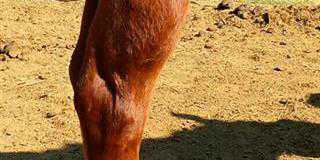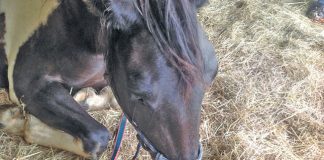It’s a pity, however, that the conditions under which they were held were dismal. The stalls were tiny, with full doors but no windows. The lack of ventilation, combined with the unbearable heat, turned each dark cell into a sauna stinking of urine.
The horses were dripping with sweat, wind-sucking in frustration, while the owners were fanning themselves under the trees.
Although there are many owners and exhibitors who treat their animals with respect and kindness, for many horses, life in the ring is hell.
I hold the organisers and judges responsible – not only for ensuring that the stabling facilities at shows are in good condition, but more so for the incredibly cruel bits and whips used.
Please stop rewarding and praising horses that are so traumatised that their eyes are almost bulging out of their sockets!
One example was a two-year-old Welsh pony that showed fear at being forced into the harness of its cart. Why was it pulling a cart at that tender age? Horses are only physically mature between five and six years.
Another beautiful horse had a snaffle in its mouth that was so thin it could cut through the skin on the jaw. It also had a piece of iron 2,5cm wide with a square ridge and a long shank to exert leverage pressure.
It was unable to close its mouth for the entire time that it was in the ring. The rider was sitting far back on the most sensitive part, but managed to stay on because of the double reins.
The irony is that upon observing the people in the stables, they showed great care and love for the animals. They are just not thinking about the results of their actions.
Show organisers, breeding organisations and judges should get their priorities straight – cruelty should not be rewarded with ribbons and it is their responsibility to put rules and regulations in place to avoid these barbaric acts.
“Let’s think of the horses’ welfare first, then the egos and the prizes.”
Fran Hunziker, via email
The South African Equestrian Association (SAEF) is affiliated to the Fédération Equestre Internationale and is trying to ensure that international standards are instituted throughout the horse industry, but it faces an uphill battle. I have been to shows such as the one described and can add the following to the list: young children riding without helmets, horses competing in too many classes, others used as armchairs between classes instead of being unsaddled, bad-fitting tack, coughing and lame horses, to name a few.
Pony clubs used to teach all this 20 years ago but they all seem to have disappeared. SAEF is attempting to bring back standards required to meet international norms for human safety and horse welfare. In the meantime, the writer should perhaps approach the NSPCA.













